Questionnaire
During my findings I collected primary research where I constructed an online survey/ questionnaire to find out about peoples thoughts and opinions on museums. I created a range of questions; including multiple choice questions and tick box questions- this gave me a range of answers to work with. I received 10 responses from my survey. All the data I received is shown in the graphs below.
Looking back at my data, I could tell that the majority of people who answered my survey were female although, that doesn’t effect anything other than the gender. This information is shown in the graph from question 2. Also, I understand from looking at my results that most of my respondents rarely visit museums or never visit museums at all. However, one of the respondents claimed they visited museums 10+ times a ear, these results are from question 3 and they tell me that one person can effect the whole range of results as not everyone will answer with the same result.
When looking at the data from the rest of the questions helped me work out the reasoning behind why the respondents do or don’t visit museums often. Question 4 tells me that the most popular reasons that people visit museums are because of “family day(s) out” and “to pass the time.” The least popular reason is for “educational purposes” this was a shock to me because one of the most popular answers to “question 1: how old are you?” showed that 16-21 year olds answered the survey the most. This age group are the typical age range of a school, college or uni student. However this does match up to the results to the reason of visit being “family days out” as most teenagers/that age group are taken out with family and not out of choice.
Looking back at the results from question 5, around 67% of the results showed that people think that it is moderately important to visit museums. No one answered that it was “not important” to visit museums and “not very important” “quite important” and “very important” all got the same amount of votes. This helped me realise that most people cannot afford to go to museums as in question 7 60% of people who answered claimed they “cant remember” the last time they visited a museum although, they also said they think they’re important which proves that people are unable to visit museums for various reasons, even if they want to.
Using the questionnaire/ survey as a research method helped me gain additional information about the publics views on museums. This additional information would help us when creating the promotional video as I would know more about the publics views and opinions.
Using this information would help me when creating the video as I could use the key points that I have found makes people want to visit museums such as cheap tickets and also talking about how fun it would be to visit the museum for a family day out (most commonly answered in q4.) Doing this would gain more attention and attraction from the public as I would be using things they have told me they like to make it appeal to the public.
Voxpop
Some questions asked in each of the voxpops relied on the previous answer the person gave, and were directed to similar or linked questions. The following information is the qualitative data taken from the voxpop.
- Have you ever visited a museum?
-Yes (7)
-No (2) - Have you visited one in the past 12 months?
-Yes (4)
-No (5) - Which museum did you last visit?
-Weston Park Museum (4)
-The Science Museum
-The National History Museum
-Never been to one - What did you like about it?
-The animal park
-Nothing about it
-The interesting history and facts about it
-The historical data and wealth of information you can learn there
-There were a lot of interesting things in the museum - What did you dislike?
-The tours were too slow
-Too much information given to learn at one time
-Nothing to do - Did you find it beneficial to your education?
-Absolutely
-Yes (4)
-Some of it - Have you ever heard of the National Emergency Services Museum?
-Yes (7)
-No (2) - Have you ever visited the NESM?
-No (8)
-Yes - Would you consider visiting it in the future?
-Maybe
-Yes (7)
-No
My results from the voxpop gave me more qualitative answers rather than quantitative so it wasn’t really an option to put my results into graphs as it would be unclear and not easy to understand. I asked 9 random members of the public (within the college) and so none of the answers were effected by biased data etc as they were all picked at random. They were asked linked or similar questions to the survey/ questionnaire relating to information about their views and opinions of museums. From looking back at the data I collected, I can see that the majority of people that we spoke to had visited a museum in the past 12 months, also it was brought to my attention that Weston Park Museum was the most popular museum visited. When asking about the museum and whether each person had had been on a trip to that museum a lot of the people had mentioned going there- possibly as a college trip or something relating to an educational purpose as a lot of the people we asked in college mentioned going on a trip there. When asking the interviewees whether they had heard of the National Emergency Services Museum a lot of them replied with yes, a few said no. Quite a few people that we interviewed had not visited the NESM before but had mentioned visiting it in the future. I could tell that most of the people we talked to had heard of the museum and had come across it before- this shows that it does have some popularity within educational trips and also just generally known as a popular museum. Although most people had not yet visited the museum they were keen to visit in the future- this helped me understand that when thinking of visiting a museum they don’t really think of the NESM as somewhere to visit even though it is widely known by a lot of people. Using a Voxpop as a research method helped me gain more information from the public rather than putting people into groups as you would using a survey. I can use the information from the Vox Pop to help me even further in promoting the National Emergency Services Museum to the public. As I now have more detailed information into what the public are interested in and what they aren’t interested in when actually visiting a museum.
My secondary research included finding out any extra information on the NESM, this includes:
- contact numbers
- website pages
- maps and directions
- facts about the museum
- name of location
- open and closing times
- weather forecasts
- prices to get in etc
Doing this secondary research helped me prepare for the day of filming by finding out history and facts about the museum and also preparing for what will happen on the day.
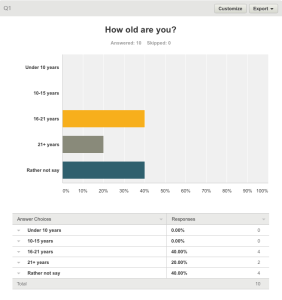
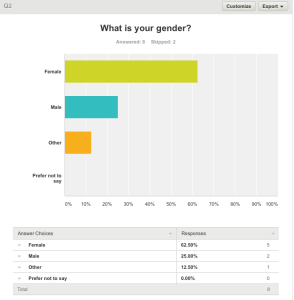
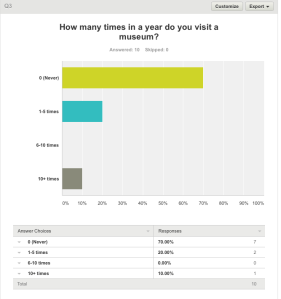
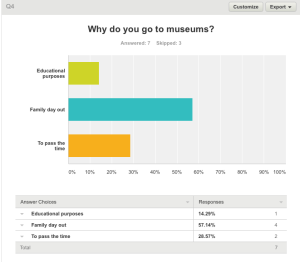
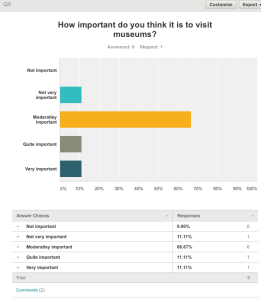
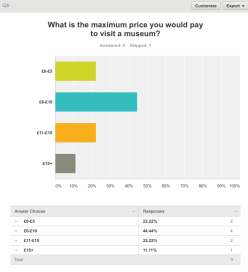

Leave a comment